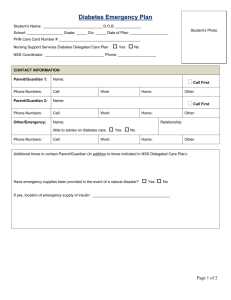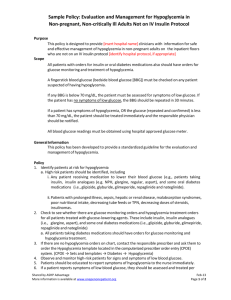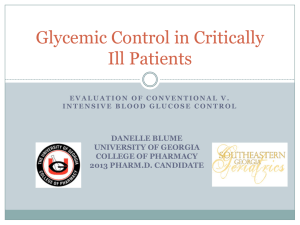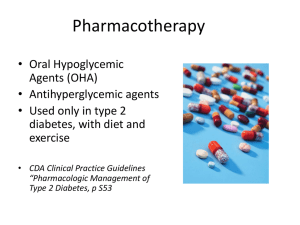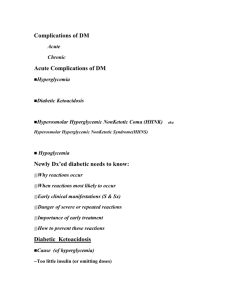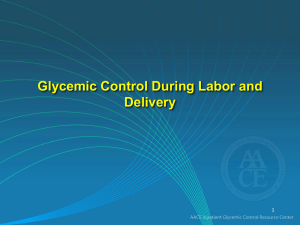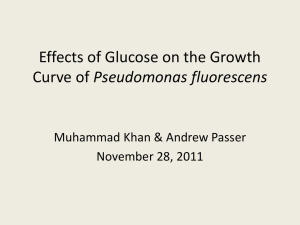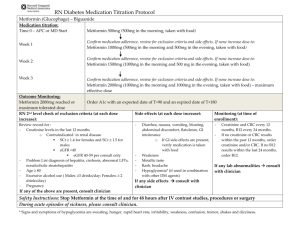Low Blood Sugar by Shirley Powell, PA-C
advertisement
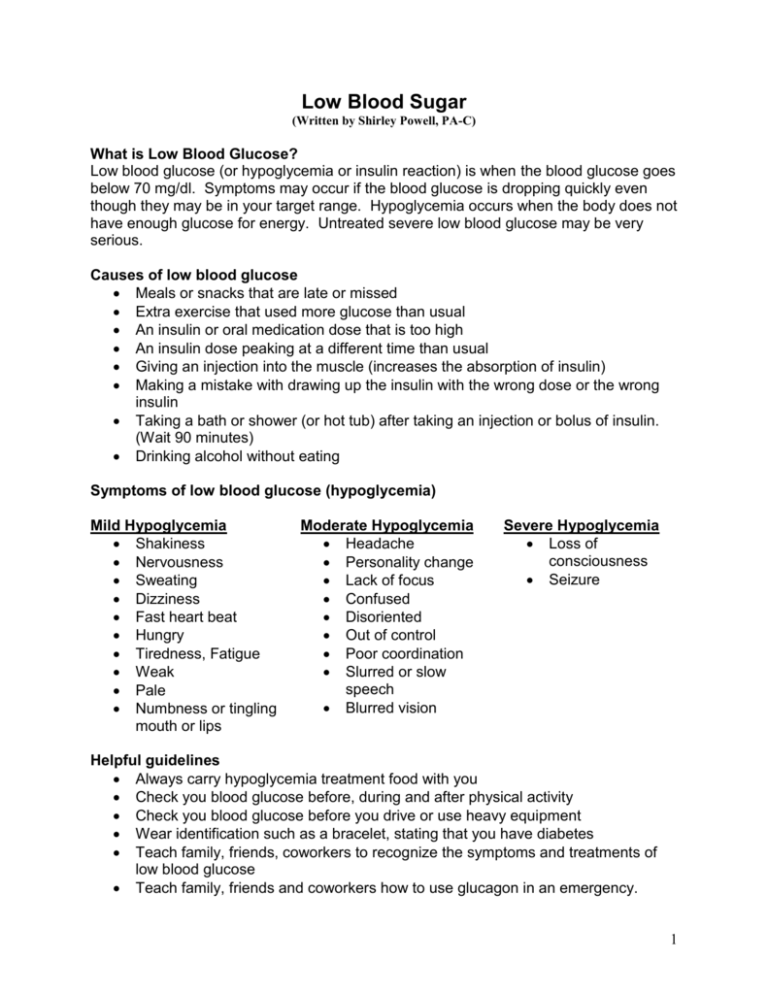
Low Blood Sugar (Written by Shirley Powell, PA-C) What is Low Blood Glucose? Low blood glucose (or hypoglycemia or insulin reaction) is when the blood glucose goes below 70 mg/dl. Symptoms may occur if the blood glucose is dropping quickly even though they may be in your target range. Hypoglycemia occurs when the body does not have enough glucose for energy. Untreated severe low blood glucose may be very serious. Causes of low blood glucose Meals or snacks that are late or missed Extra exercise that used more glucose than usual An insulin or oral medication dose that is too high An insulin dose peaking at a different time than usual Giving an injection into the muscle (increases the absorption of insulin) Making a mistake with drawing up the insulin with the wrong dose or the wrong insulin Taking a bath or shower (or hot tub) after taking an injection or bolus of insulin. (Wait 90 minutes) Drinking alcohol without eating Symptoms of low blood glucose (hypoglycemia) Mild Hypoglycemia Shakiness Nervousness Sweating Dizziness Fast heart beat Hungry Tiredness, Fatigue Weak Pale Numbness or tingling mouth or lips Moderate Hypoglycemia Headache Personality change Lack of focus Confused Disoriented Out of control Poor coordination Slurred or slow speech Blurred vision Severe Hypoglycemia Loss of consciousness Seizure Helpful guidelines Always carry hypoglycemia treatment food with you Check you blood glucose before, during and after physical activity Check you blood glucose before you drive or use heavy equipment Wear identification such as a bracelet, stating that you have diabetes Teach family, friends, coworkers to recognize the symptoms and treatments of low blood glucose Teach family, friends and coworkers how to use glucagon in an emergency. 1 Treatment of low blood sugar (hypoglycemia) 15-15 Rule o Check blood glucose level o Give 15 grams of glucose or simple carbohydrate (sugary) 3 glucose tablets ½ of 1 tube instant glucose (1 tube equals 31 grams CHO) 1 small tube of cake gel (equals 12 grams CHO) 4 ounces of juice ½ cup of regular soft drink 10 oz glass of milk 6-7 jellybeans 6 Life savers 15 Skittles 8 pieces of Sweet Tarts 3 teaspoons sugar or honey o Rest for 15 minutes o Recheck blood glucose in 15 minutes (10-20 minutes) o If blood glucose is less than 70 mg/dl (or 80 mg/dl for some people) repeat the treatment of 15 gm carbohydrate of sugary food, repeat rest and repeat monitoring blood glucose o If blood glucose is greater than 70 mg/dl (or 80 mg/dl for some people) eat a solid snack Other considerations for treatment of hypoglycemia o If a severe hypoglycemia reaction is occurring or the individual is unconscious or having a seizure place individual in a safe position and treat with glucagon. o Report severe low blood glucose events to the physician, physician assistant, or nurse o Evaluate any cause for the low blood glucose. o Carefully evaluate night time hypoglycemia Consider post exercise hypoglycemia Consider Insulin action Know the different symptoms such as nightmares, night sweats, seizures and morning headaches o Do not eat candy bars or chocolate because the fat in these foods slow the rise of the blood sugar. o Do not eat a snack until the blood sugar has returned to greater than 80 mg/dl because the fat and protein will slow the rise in blood glucose o For children adjust the portion of the simple carbohydrates for age such as give a 2 year old 2 ounces of juice 2
